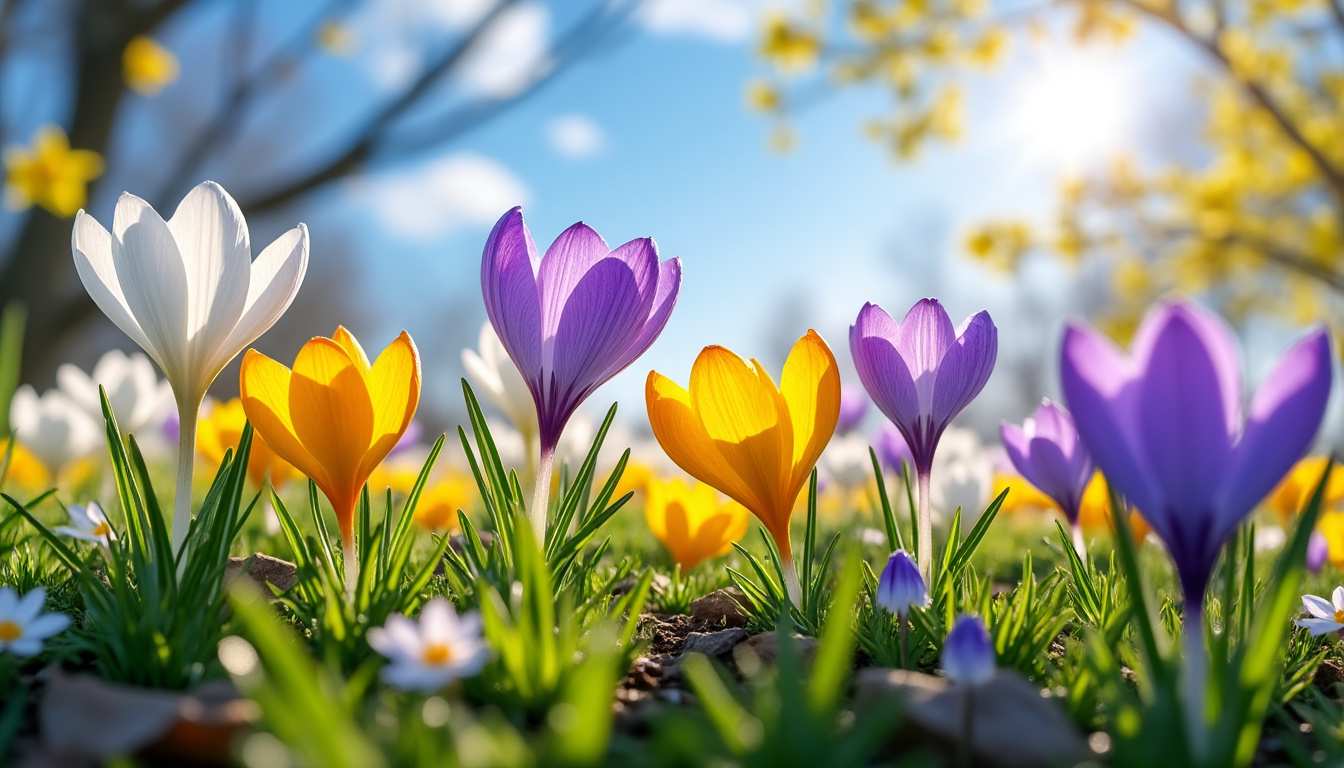As autumn sets in, it’s the perfect moment to strategize your spring garden. If your vision includes a vibrant array of spring blooms, it’s essential to consider planting crocus bulbs now. With expert insights indicating that September weather is typically dry and amiable, now is not just a chance but an invitation to create a spectacular floral display come springtime. Crocuses, renowned for their stunning colors, are among the earliest to bloom, heralding the arrival of warmer days.
Why Autumn is The Right Time To Plant Crocus Bulbs
According to gardening experts, the ideal window for planting spring-flowering bulbs stretches from September to November. Craig Wilson, a distinguished figure in the gardening sector and co-founder of Gardener’s Dream, emphasizes the importance of planting bulbs before the first hard frost. “The soil remains cool but not frozen, which is crucial for proper root establishment,” he explains. This autumn planting ensures your crocus bulbs will thrive as winter unfolds.
Optimal Conditions for Crocus Bulbs
To achieve the best results with your crocus bulbs, they should be planted in well-drained soil, which is vital for healthy growth. Aim to place the bulbs about 5 cm deep and space them 5-8 cm apart to allow for adequate air circulation. Crocuses thrive under full sun or partial shade, making them quite versatile. However, remember to maintain a moist, but not waterlogged, soil to nurture their development.
Five Types of Bulbs to Consider for A Colorful Spring Display
While crocus bulbs are a fantastic option, several other bulb varieties can add to your spring garden’s color palette. Here’s a brief look at five spectacular choices:
| Bulb Type | Description | Planting Depth | Spacing |
|---|---|---|---|
| Crocuses | Early bloomers with vibrant colors ranging from purple to yellow. | 5 cm | 5-8 cm |
| Daffodils | Classic yellow flowers symbolizing the arrival of spring. | 10-15 cm | 10 cm |
| Tulips | Available in various colors, ideal for eye-catching displays. | 20 cm | 10 cm |
| Iris Reticulata | Charming purple flowers attracting early pollinators. | 10 cm | 10 cm |
| Alliums | Architectural bulbs with striking globe-shaped clusters. | 10 cm | 15 cm |
Enhancing Your Spring Garden with Diverse Bulbs
Combining different types of bulbs can create an enchanting spring spectacle. For instance, pairing crocuses with daffodils can produce a delightful contrast. Daffodils not only thrive in the same conditions as crocuses but also add a cheerful yellow touch to your garden. Remember to consider purchasing from reputable suppliers, such as Burpee, Gardener’s Supply Company, or Eden Brothers, to ensure high-quality bulbs.
When are new potatoes ready for harvest?
Protection Against Frost: Best Practices
As temperatures drop, some concern arises regarding frost. However, there’s a level of reassurance to be found; the soil often acts as a natural insulator for your bulbs. Craig Wilson advises, “While most bulbs are hardy against frost, adding a layer of mulch or straw can provide extra protection during harsh winters.” If you have wine corks around, these can serve as an eco-friendly insulating mulch. Drinking a warming glass of red while protecting your plants sounds like a win-win!
Frequently Asked Questions
1. When is the best time to plant crocus bulbs?
The optimal timeframe to plant crocus bulbs is between September and November to ensure proper root establishment before winter.
2. Can crocus bulbs survive frost?
Yes, crocus bulbs are generally frost-hardy, but protective measures like mulch can help safeguard them.
3. How deep should I plant crocus bulbs?
Plant crocus bulbs about 5 cm deep to give them the best chance of thriving.
4. Will crocuses return each year?
Crocuses are perennial, meaning that with proper care, they will bloom again each spring.
5. Where can I buy high-quality crocus bulbs?
Consider purchasing from trusted suppliers like White Flower Farm, Fast Growing Trees, or Park Seed for high-quality bulbs.









